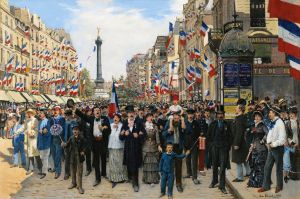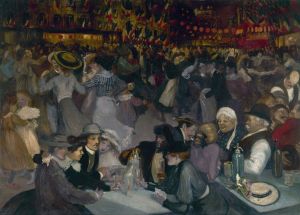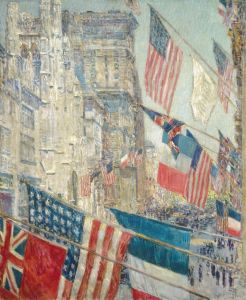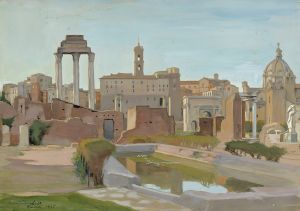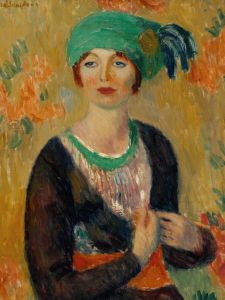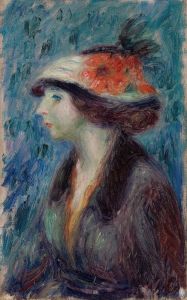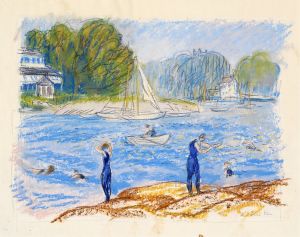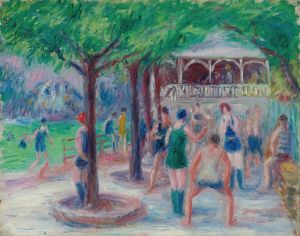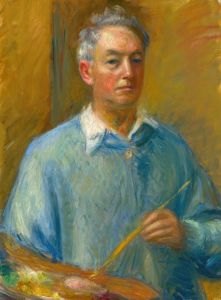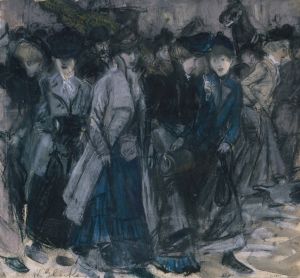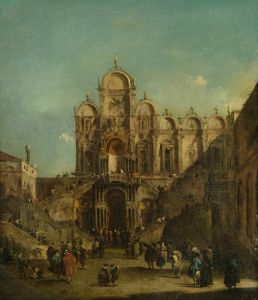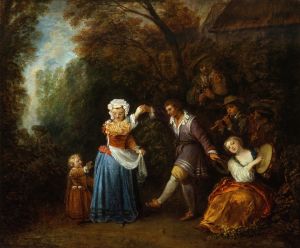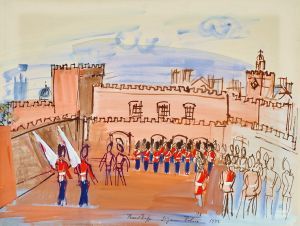
Parade, Washington Square
A hand-painted replica of William James Glackens’s masterpiece Parade, Washington Square, meticulously crafted by professional artists to capture the true essence of the original. Each piece is created with museum-quality canvas and rare mineral pigments, carefully painted by experienced artists with delicate brushstrokes and rich, layered colors to perfectly recreate the texture of the original artwork. Unlike machine-printed reproductions, this hand-painted version brings the painting to life, infused with the artist’s emotions and skill in every stroke. Whether for personal collection or home decoration, it instantly elevates the artistic atmosphere of any space.
"Parade, Washington Square" is a notable painting by the American artist William James Glackens, created in 1912. Glackens was a prominent figure in the Ashcan School, a movement known for its focus on depicting scenes of everyday life in New York City during the early 20th century. This painting exemplifies Glackens' interest in capturing the vibrancy and dynamism of urban life.
The painting portrays a bustling scene in Washington Square Park, a well-known public space in the Greenwich Village neighborhood of Manhattan, New York City. Washington Square Park has long been a gathering place for a diverse cross-section of New Yorkers, and Glackens' work captures the lively atmosphere of the area. The painting is characterized by its vivid colors and energetic brushwork, which are hallmarks of Glackens' style.
In "Parade, Washington Square," Glackens employs a bright and varied palette to bring the scene to life. The composition is filled with figures engaged in various activities, suggesting a parade or public event taking place in the park. The artist's use of light and shadow adds depth to the scene, while the loose, impressionistic brushstrokes convey a sense of movement and spontaneity.
Glackens was known for his ability to depict the social fabric of New York City, and this painting is no exception. The figures in the scene are diverse, reflecting the melting pot nature of the city. This inclusivity is a key aspect of the Ashcan School's philosophy, which sought to portray the realities of urban life, including its diversity and complexity.
The painting also reflects Glackens' interest in the interplay between people and their environment. Washington Square Park, with its iconic arch and surrounding architecture, serves as a backdrop that enhances the sense of place. The park was, and remains, a hub of cultural and social activity, making it an ideal subject for Glackens' exploration of urban life.
"Parade, Washington Square" is housed in the collection of the Philadelphia Museum of Art, which holds a significant number of works by Glackens. The museum's collection provides insight into the artist's development and his contributions to American art. Glackens' work, including this painting, is celebrated for its ability to capture the spirit of the early 20th-century American city, with all its vibrancy and diversity.
Overall, "Parade, Washington Square" is a testament to William James Glackens' skill as an artist and his commitment to portraying the dynamic life of New York City. Through his use of color, composition, and subject matter, Glackens offers viewers a glimpse into the bustling world of Washington Square Park, making it a significant work within the context of American art history.





